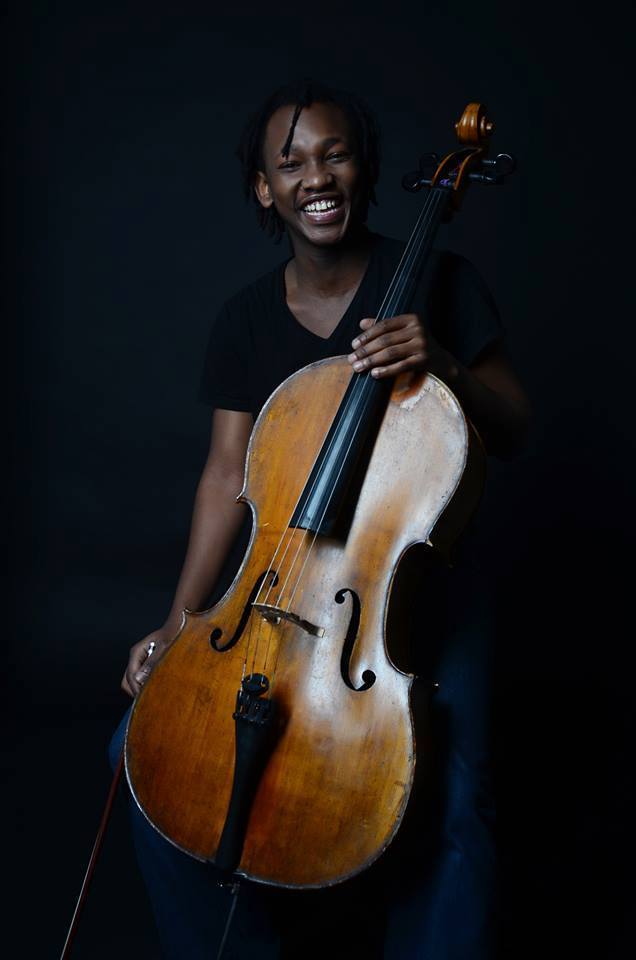There are few musicians who are able to move seamlessly between headlining the BBC Proms with the BBC National Orchestra of Wales one night and improvising at the London Jazz Festival the next. Abel Selaocoe is one such musician – able to master virtuosic performance with improvisation, singing and body percussion. But what are the pieces of music that has helped him become the player he is today? He's picked out some of the essential works every cellist should master during their musical career.
The pieces of music every cellist should play
Platti's Cello Sonata No. 7
Platti's Cello Sonata No. 7 is one of those pieces that compels you to sing along making you admire the singing and soulful qualities the cello possesses. I love music that feels improvised and sung, and Baroque music inspires exactly that.
Improvisation is often synonymous with folk or other genres of music, but it is such an apt term for this Platti Sonata. Platti provides us with the body of the music: melody, bass and a suggestion of harmony. It is up to the artist to embellish or decorate the melody in their style of singing the same way you would teach a folk tune to a singer and they would simply sing it in their own way. This freedom comes with responsibility as it is important to learn the art of embellishment and harmony. The continuo, played on an instrument like the theorbo, interprets the harmony in such a way that it makes every moment a spontaneous one.
Recommended recording:
Sebastian Hess and Axel Wolf Oehms Classics
Britten Cello Sonata
This is a piece with a story to tell. Often great tales have incredible timing with tension and release. This sonata begins with a tense, almost fearful, hushed conversation between the cello and the piano.
Britten wrote his Cello Sonata for legendary cellist Mstislav Rostropovich. It pushed the boundaries of the cello through rhythm, new techniques and lyricism. In the second movement he takes pizzicato (plucking of the string) to a whole new level, making the cellist pluck the string with both hands making a tremolo sound on each string. It inspired me as a composer to explore these possibilities, because it was a technique that worked so well with African Rhythmic music. and this was a technique welcome to the world of African music.
It's a great piece to help you connect to a modern way of playing. In the last movement Britten explores ricochet, bouncing the bow on the string. There's such an incredible rhythmic power to it. It reminds me of the contemporary/folk/rock cellist Rushad Eggleston's song C-Funk.
Recommended recording:
Johannes Moser (cello), Paul Rivinus (piano) Hänssler HAEN93257
Down Deep by Ernst Reijseger
The cello has many homes, both as a solo instrument and also as an accompanist. Playing bass lines is just as important as the melody. One of my favourite cellists Ernst Reijseger delves into this form, playing with a five-string cello tuned to the notes of F, C, G, D and A.
In Down Deep, the cello shape shifts roles between percussion instrument and bass. It's used as a resonant box that can produce different tones in a rhythmic fashion, so it's played like slap and suddenly played in like slap bass. Lastly it is a real pleasure to see the cello at home in an unusual trio of voice and piano. This cellist inspired me to start my own ensemble called Chesaba, with Cello, African Percussion, voices and Electric bass.
Recommended recording:
Ernst Reijseger (cello), Harmen Fraanje (piano), Mola Sylla (multi-instrumentalist)
LB Files by Giovanni Sollima
Cellist and composer Luigi Boccherini was a rockstar of his time – and it was he who inspired this virtuosic concerto. LB Files quotes Boccherini's Cello Concerto and his Guitar Quintet No. 4 'Fandango', while at the same time showing that Sollima too is a rockstar. He's a vivid storyteller, pushing the boundaries of the instrument, but is also able to conjure a vulnerability within his audience.
When I was preparing this piece to perform at the BBC Proms, the learning process involved developing an understanding of how to use the bow in new and inventive ways – from harmonics that ring like a whistle to excessive sulpot (playing close to the bridge), which comes close to sounding like a rock guitar.
Recommended recording:
Giovanni Sollima (cello)
The Protecting Veil by John Tavener
This is deeply spiritual music that transcends the traditional concerto form. The inspiration for the piece comes from the Orthodox feast of the Protecting Veil of the Mother of God, which commemorates the spiritual intervention of Virgin Mary at the Blachernae Palace church in Constantinople. It is miraculous act of powerful prayer aiming to defeat oppression and war. Yet again, the cello is featured as this powerful source of song. It is the voice as a universal concept that transcends genre. Steven Isserlis is an incredible cellist who brings this music alive in the most spectacular fashion, with a sincere and searing sound.
Recommended recording:
Steven Isserlis Erato 3632932
BBC Radio 3's Abel Selaocoe: Cello Retold is now available to stream on BBC Sounds. The three-part series explores cello music and the way the instrument is interpreted in various musical traditions around the world.
